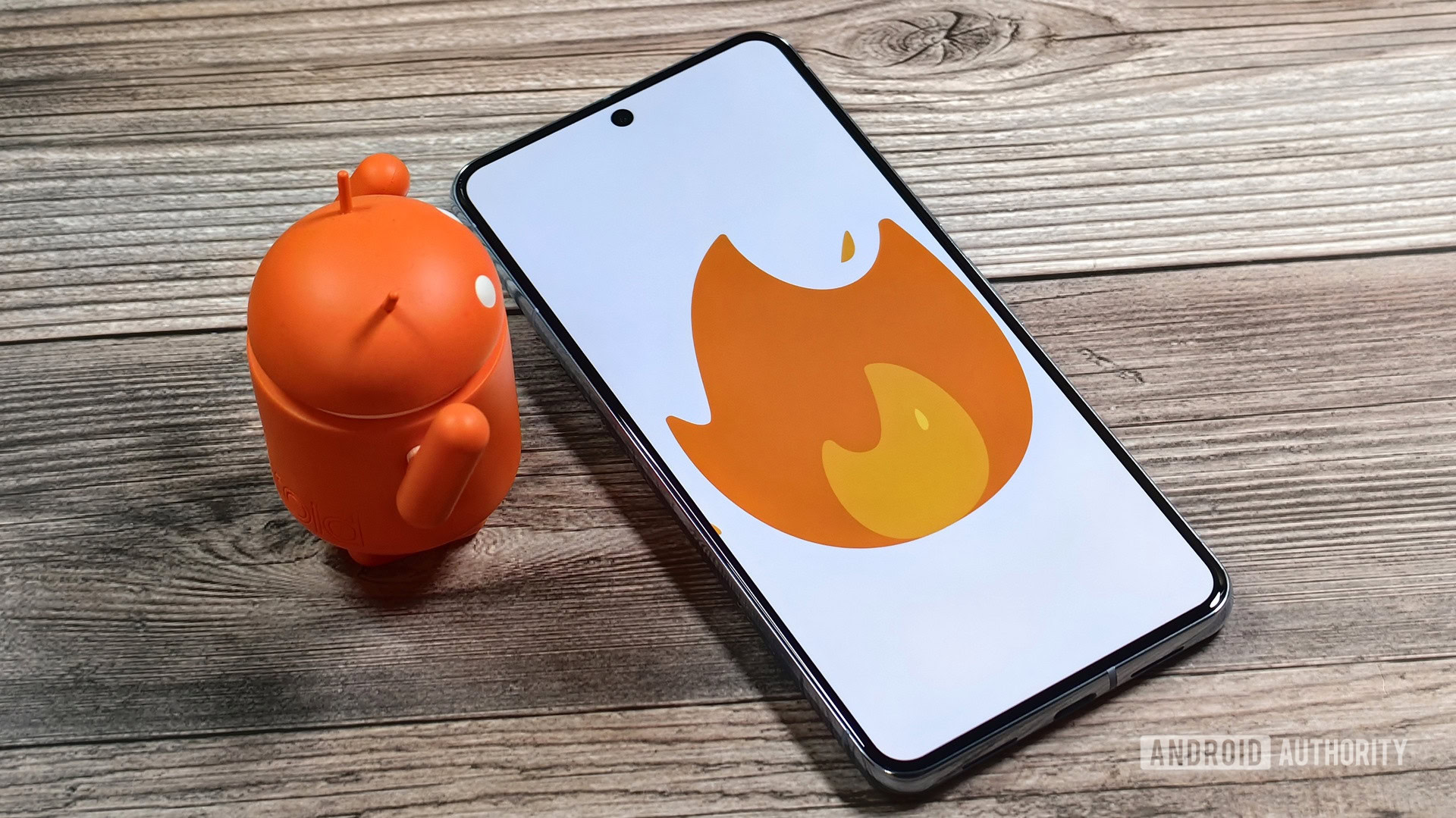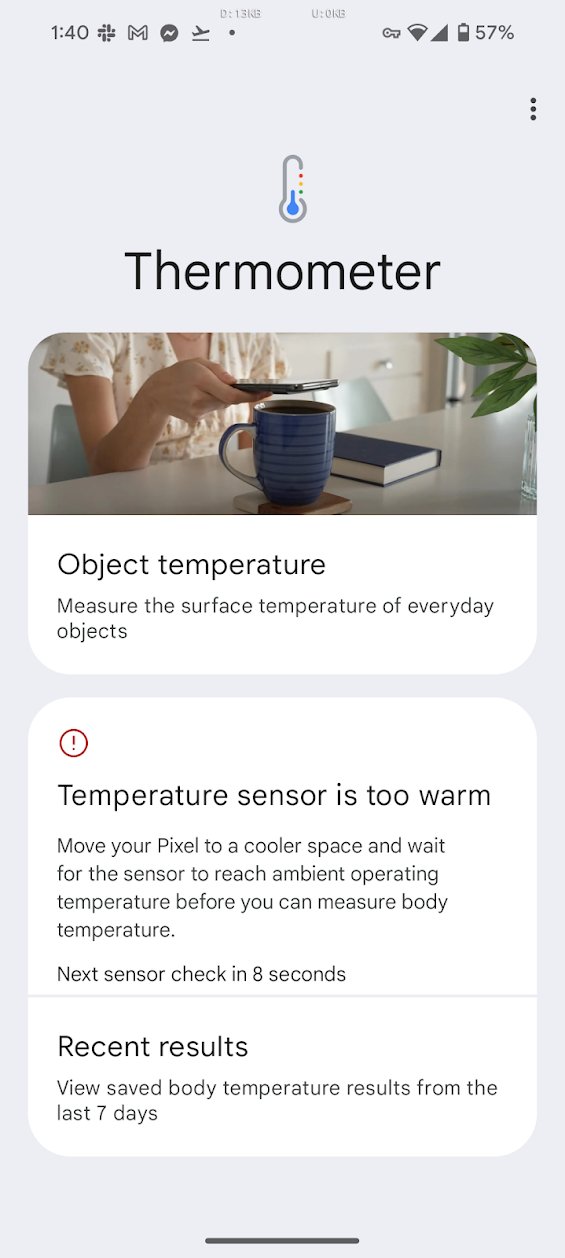Affiliate links on Android Authority may earn us a commission. Learn more.
Upcoming 'Adaptive Thermal' feature for Pixels will teach you to prevent overheating (APK teardown)
Published onJune 20, 2024

- A Pixel phone will soon proactively enlist the user’s help in cooling it down when it’s overheating.
- The phone will alert the user what actions it’ll take to cool itself down as well as share tips on how the user can help out.
- New strings within the latest version of Google’s Device Health Services app reveal work on this alert, code-named “Adaptive Thermal.”
Most Android phones are able to keep themselves cool by intelligently regulating their own performance, but there are times when drastic measures need to be taken to prevent damage to internal components. If you’re using your phone outdoors under the hot sun, then naturally, your phone will heat up a lot more than if you were using it indoors. Combine that with the increased power draw from the display needing to ramp up its own brightness to remain visible and the power-hungry 5G modem needing to connect to distant towers, and it’s no wonder that overheating is a problem for some users.
Fortunately for Pixel users, Google has already baked in a couple of anti-overheating features to prevent damage to your phone. For example, Google says on a support page that Pixel phones intentionally limit some functions when they sense they’re too hot. These include throttling performance, slowing down charging speeds, turning off the camera’s LED flash, disabling camera capture, and partially or fully disabling the mobile data or Wi-Fi connection. Google even warns that your phone may automatically turn itself off once it gets dangerously hot, a safety feature that’s quite common on consumer electronics.
There are only so many actions that your phone can take by itself to regulate its temperature when it’s overheating, though. No amount of performance throttling or feature disabling can combat the heat from a scorching sun, which is where you, the user, needs to step in. There are some simple yet very effective steps you can take to cool down your phone when it’s overheating, and thanks to the Pixel’s new “Adaptive Thermal” feature, you won’t need to open up a web browser to see what they are.
In the latest version of the Pixel’s Device Health Services app (version 1.27), we spotted some strings related to a new Adaptive Thermal feature. This feature consists of several components, including a notification that spawns a dialog and a battery temperature measurement service.
When the battery temperature reaches 49 degrees Celsius (~120 degrees Fahrenheit), the “pre-emergency” alert is triggered. This causes a notification to be posted that says your “phone needs to cool down.” The notification says you “may experience slower performance” and should “try avoiding direct sunlight or close any battery-intensive apps.” A single button to See care steps is included in the notification.
<string name="pre_emergency_notification_title">Phone needs to cool down</string>
<string name="pre_emergency_notification_content">You may experience slower performance. Try avoiding direct sunlight or close any battery-intensive apps.</string>
<string name="pre_emergency_notification_action_button">See care steps</string>Tapping the See care steps button will spawn a dialog that shares more information on what steps the operating system is taking to cool down the device, such as temporarily limiting performance speed and disabling the 5G network. It also reiterates some tips on how you can help cool down your phone, such as avoiding direct sunlight, putting your phone in the open for better airflow, or closing any battery-intensive apps such as videos, games, and the camera. You can dismiss the dialog by tapping the Got it button or tapping Learn more, which opens the support page mentioned earlier.
<string name="pre_emergency_dialog_title">Phone needs to cool down</string>
<string name="pre_emergency_dialog_content">"Pixel will try to cool your phone down by temporarily limiting:
• Performance speed
• Disabling 5G network, and more
How to help cool down your phone:
• Try avoiding direct sunlight
• Put your phone in the open for airflow
• Close any battery-intensive apps such as videos, games, and the camera
Once your phone cools down, it will run normally again"</string>
<string name="pre_emergency_dialog_dismiss_button">Got it</string>
<string name="pre_emergency_dialog_action_button">Learn more</string>Adaptive Thermal will sample the battery temperature every five minutes to see if the phone has cooled down. If the phone still hasn’t cooled down but instead reaches 52 degrees Celsius (~126 degrees Fahrenheit), Adaptive Thermal enters the “emergency” state. I don’t know what exactly happens in this state, but I’m assuming even more drastic actions are taken. If those actions don’t help to cool down the phone and it reaches a dangerous 55 degrees Celsius (~131 degrees Fahrenheit), then Adaptive Thermal will warn the user 30 seconds before it shuts down the phone to protect itself.
<string name="pre_shutdown_dialog_title">Phone will shut down in about 30 secs due to high temperature</string>The flags for Adaptive Thermal aren’t enabled yet, but even after enabling them, I was unable to actually trigger the alert. This is mainly because I couldn’t get my phone hot enough to actually trigger it (the closest I got was 46 degrees Celsius, even while running an intensive benchmark under direct sunlight). Fortunately, Adaptive Thermal only alerts you about what the phone is already doing under the hood to protect itself, so you don’t need to worry about it not being available yet. So long as you follow some basic tips, you should be able to cool your phone down before it dangerously overheats.
Hopefully, future devices from Google — such as the upcoming Google Pixel 9 series — have better thermal regulation features to prevent overheating. The rumored shift to TSMC for next year’s Tensor G5 chipset could also help with efficiency, but we won’t know for quite a while. If you own a Pixel device, do you feel that it overheats often? Let us know in the comments!
